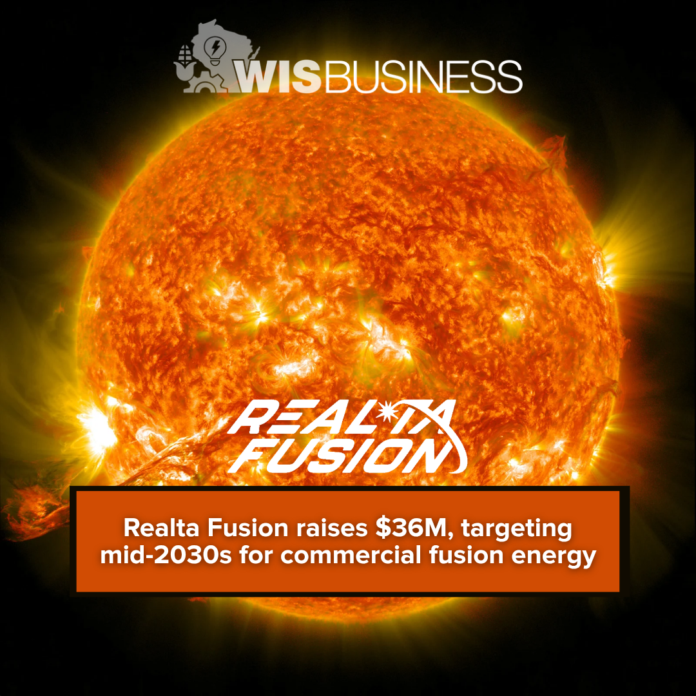Madison-based Realta Fusion is targeting the mid-2030s for commercial fusion energy production as it continues raising funds and growing its team.
“For some, that may sound like a long way away, but I think in the world of energy that we operate in, that’s actually a pretty normal project timeline … so that’s what we’re targeting,” CEO Kieran Furlong said in a recent interview. “It may seem a long way away, but it will be here before we know it, and we need to be ready, given the energy demands that we’re seeing for humanity.”
The startup company, which is based on technology being developed at UW-Madison, yesterday announced it has raised $36 million in a Series A investment round. Green Bay’s TitletownTech, Bascom Ventures, WARF and several other investors joined the round, which brings the company’s total funds raised to about $50 million.
Existing nuclear power generation is currently limited to fission reactions, which involve splitting heavier atoms into smaller ones to produce energy. Fusion, by contrast, achieves energy production by combining atoms together. While fusion is seen as a cleaner path to nuclear energy, it has yet to be commercialized for this purpose.
The field of fusion research hit a “major scientific threshold” in December 2022, when the U.S. Department of Energy announced the first “break even” fusion reaction, Furlong explained. While fusion occurs constantly within the sun and other stars, this was the first controlled fusion reaction demonstrated by scientists that produced more energy than was put into the system.
“Ourselves and many other fusion startups are working hard to kind of take the decades of scientific research that have been done, but now we’ve got a startup gung-ho mentality and we’ve got private capital going into it,” he said. “And we’re really accelerating the process of fusion energy development and ultimately get to deployment.”
Realta Fusion’s approach uses powerful magnets to create a “cage” to confine energetic plasma where the fusion occurs. Furlong noted this system needs fewer expensive magnets than other designs for fusion machines, which he says is an advantage for going to market.
“We can go smaller, which also means lower capital,” he said.
While Furlong isn’t ruling out utility-scale power generation for fusion, he says that’s “further down our path.” To start, Realta Fusion is targeting large “captive” energy users such as data centers or other industrial plants, where its systems could be used to create energy or heat.
“Look at Microsoft’s new investment they’re making in southeastern Wisconsin, putting in a fusion power plant alongside something like that to deliver the firm, always-on energy that a data center needs would be an ideal use case,” he said. “That would be where we’re converting all of the fusion energy to electricity.”
As the company advances toward applications like this, Furlong plans to keep expanding in Wisconsin. Realta Fusion currently has 18 employees and he says that will likely grow to 30 by the end of the year.
He touted the potential impact from the fusion industry on the state’s workforce and manufacturing sector, noting Wisconsin already has the academic know-how needed to support growth in this area and eventually become a “global hub” for fusion machinery.
“Ultimately, fusion will give us a different kind of energy industry than we have today,” he said. “Right now, today it’s all about the fuel, where do we get the oil, the gas or the coal from. When we’re talking about fusion, the fuel isn’t as important … It’s going to be about the fusion machines. Who’s making those, who’s exporting those and who’s getting the revenue from all that manufacturing.”






